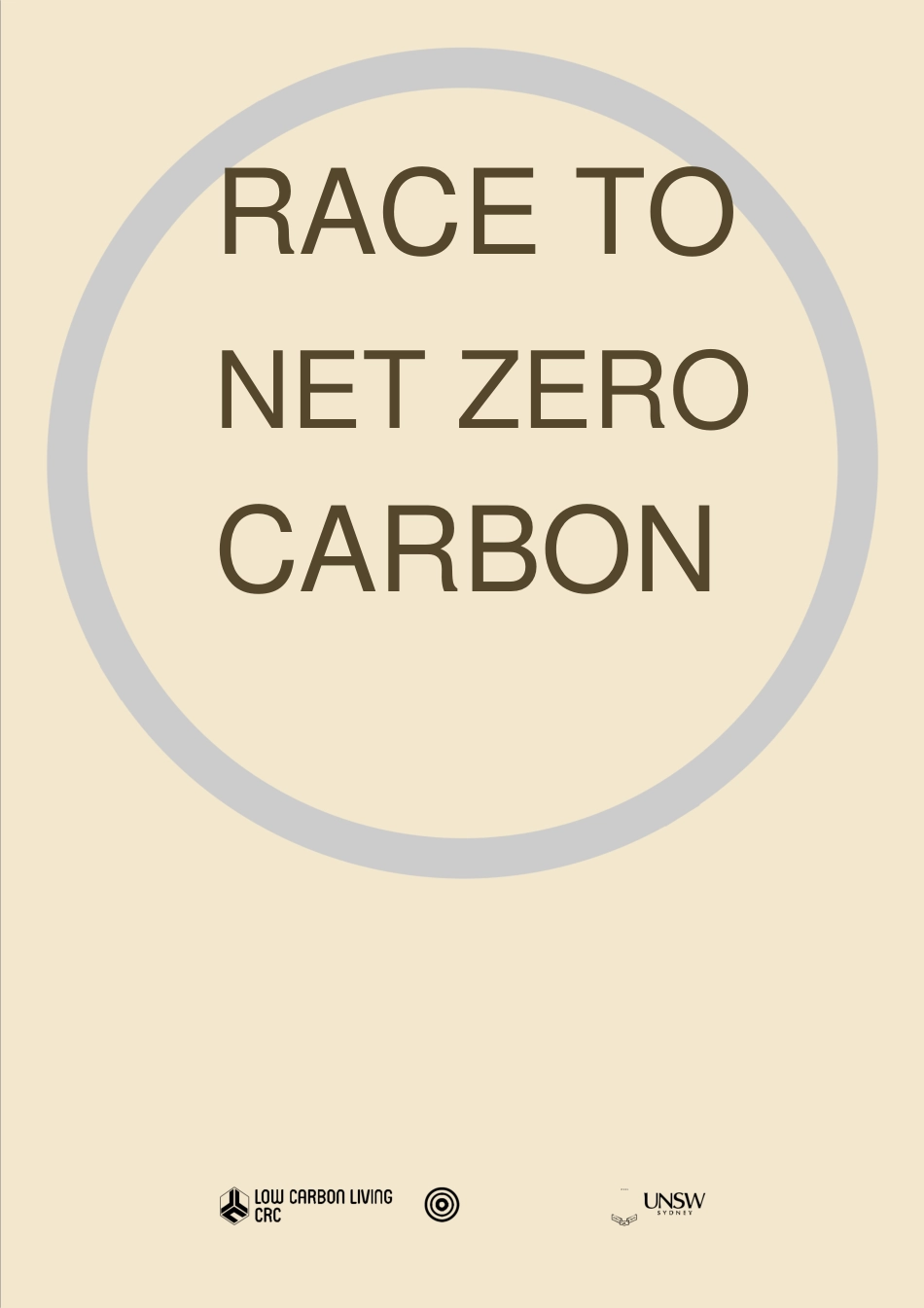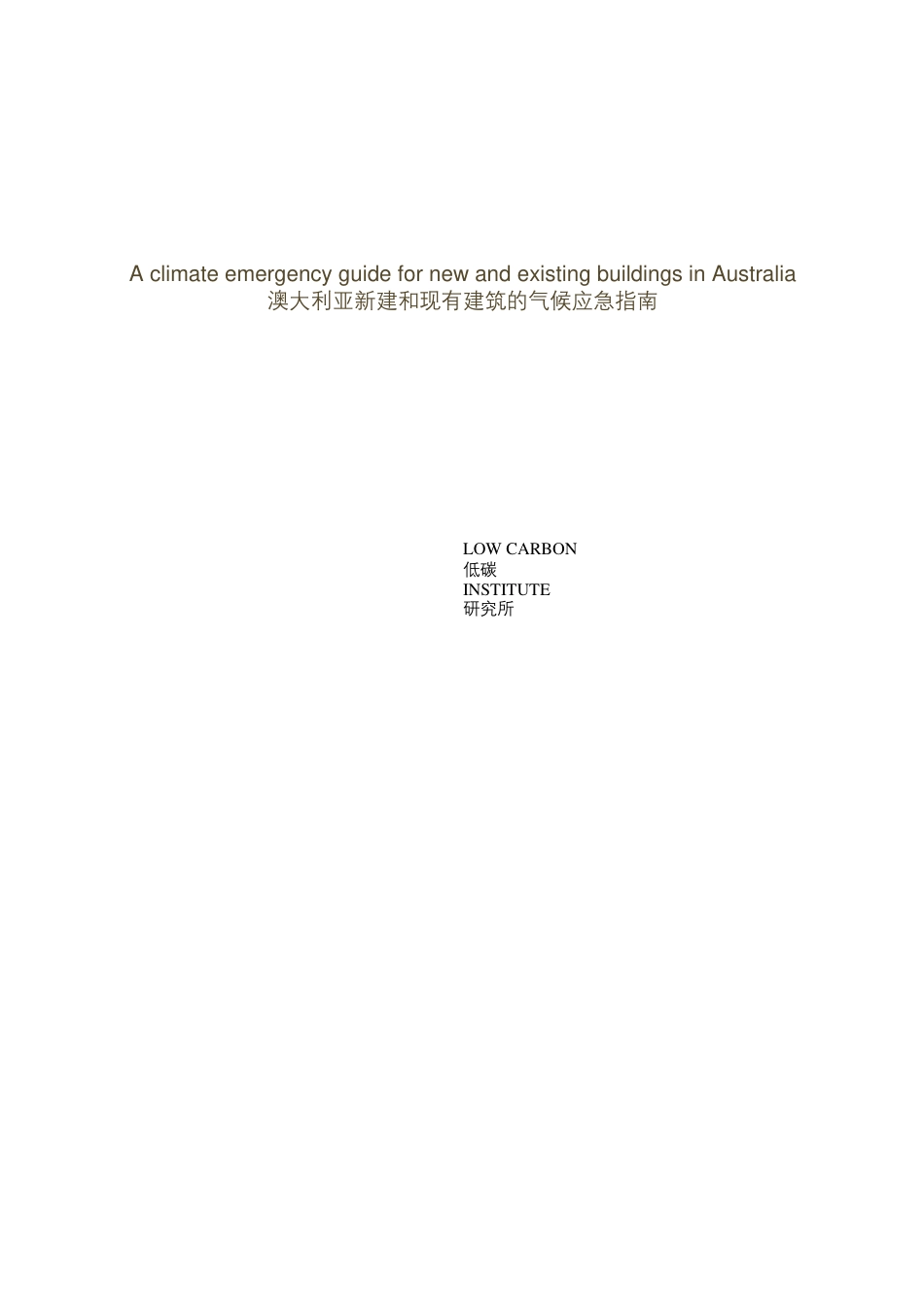RACE TO NET ZERO CARBON A climate emergency guide for new and existing buildings in Australia 澳大利亚新建和现有建筑的气候应急指南 LOW CARBON 低碳 INSTITUTE 研究所 Acknowledgement of Country 国家确认 The authors of this 本文作者 guide acknowledge 向导,确认 the Bedegal people, Bedegal 人民, the Traditional 传统的 Custodians of the Land 土地管理者 on which this research 这项研究 was conducted. 的研究。 We pay our respects 我们表示敬意 to Elders both past 向过去的长辈们致敬 and present and 还有现在 extend that respect 表示尊重 to all First Nations 所有第一民族 people of Australia. 澳大利亚人民。 3 Sub Section heading 分段航向 Acknowledgements 鸣谢 Authors Deo Prasad, Malay Dave, Aysu Kuru, Philip Oldfield, Lan Ding, Caroline Noller, Baojie He 作者: Deo Prasad,Malay Dave,Aysu Kuru,Philip old field,Lan Ding,Caroline Noller,Baojie He Title Race to Net Zero Carbon: A Climate Emergency Guide for New and Existing Buildings in Australia v1b 标题竞争净零碳排放: 澳大利亚新建和现有建筑的气候应急指南 November 2021 (Updated July 2022) 2021 年 11 月(2022 年 7 月更新) Cover The circle, signifying net zero, comprises both embodied carbon (in green) and operational carbon (in yellow), illustrating that both embodied and operational carbon must be considered in a building’s lifecycle. 表示净零的圆圈,包括内含碳(绿色)和操作碳(黄色) ,说明内含碳和操作碳在建筑的生命周期中都必须被考虑。 Guide design Jinga Design 导游设计金甲设计 This guide and its benchmarks and targets have been reviewed by industry advisors: Lester Partridge from 本指南及其基准和目标已经过行业顾问 Lester Partridge 的审查 LCI Consultants, Ian Dixon from GHD and Caroline Pidcock from PIDCOCK. This project also benefited from the data and comments provided by NABERS, Planning Institute of...



